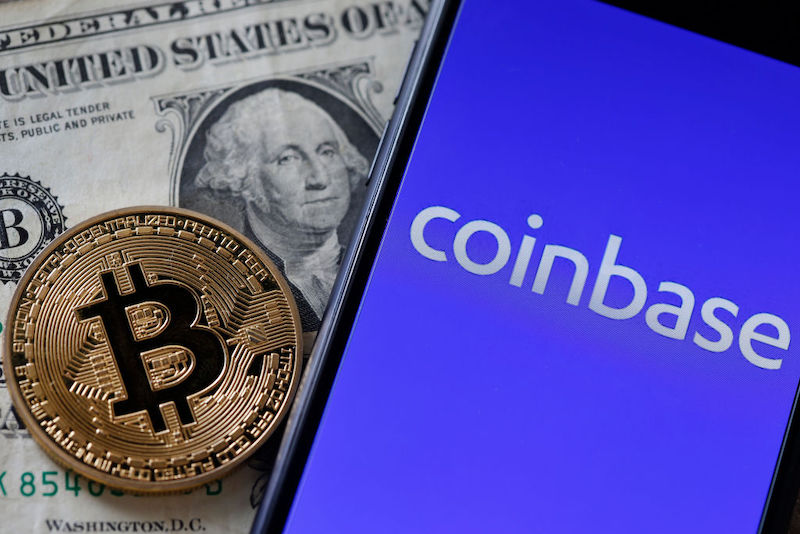
Fintech promises to decentralize and democratize financial markets, but consumer protection and regulation are still needed.
Last month, Coinbase, one of the world’s largest cryptocurrency exchange platforms, distributed shares of common stock in a highly anticipated public offering. Instead of engaging a storied investment bank to launch an initial public offering (IPO) through a well-developed network of institutional investors—such as pension funds, mutual funds, endowments, and exceptionally wealthy individual investors—Coinbase sold its shares directly to the investing public.
Coinbase’s direct offering and its luminary role in the cryptocurrency sector illustrate a mounting movement toward disintermediation. This movement aims to minimize or eliminate the role of legacy financial intermediaries such as investment banks that underwrite IPOs or broker-dealers that facilitate secondary market trading. As I explore in a recent article, juxtaposing intermediary-driven transactions with those executed on blockchain protocols without traditional intermediaries reveals the promise and peril of disintermediation.
For nearly a century, regulation, market structure, and popular culture have characterized public offerings as intermediary-driven transactions. Statutory exemptions and regulatory safe harbors often presume intermediation. Award-winning films and television shows feature seductive, charismatic, jet-setting twenty-something bankers—and their lawyers—launching IPOs. In fact, determining the valuation of a business, attracting geographically dispersed and diverse classes of investors, and complying with a complex set of disclosure regulations adopted and enforced by the U.S. Securities and Exchange Commission (SEC) to ensure compliance with federal statutes (the Securities Act of 1933 and the Securities Exchange Act of 1934) proves quite challenging for first-time issuers. These structural barriers may compel issuers to engage outside counsel and a competent investment bank as intermediaries.
In large public offerings, issuers may agree to distribute discounted shares to a syndicate of Wall Street investment banks as compensation for the banks undertaking the risks of underwriting the offering. In contemporary markets, however, these risks may be illusory. The underwriting syndicate has often engaged in a careful valuation analysis and solicited indications of interests that establish a fairly accurate price range for the shares. Before the date of the IPO, shares not reserved for the proprietary portfolio of a syndicate member are traditionally allocated to a network of institutional investors with whom the syndicate has well-established, pre-existing relationships.
Even if an issuer’s IPO does not reach anticipated valuation pricing, the underwriters typically include contract provisions that enable them to hedge against offering-related losses. For example, on the debut of Uber’s IPO, market demand did not support underwriters’ anticipated $120 billion valuation. To mitigate against the threat of losses related to underwriting Uber’s IPO, the investment banking syndicate exercised rights nestled in a provision in the Underwriting Agreement that enabled them to hedge their risk exposure by employing a “naked short” strategy. These types of protections undermine the traditional gatekeeper role assigned to underwriters, eliminating risk exposure as well as accountability. In addition to deepening frustration regarding these types of tactics, issuers and investors express understandable consternation about the staggering amounts of compensation paid to underwriters. Consider the $300 million in fees Chinese e-commerce behemoth Alibaba paid its underwriters—Citigroup, Inc., Credit Suisse Group AG, Deutsche Bank, Goldman Sachs Group, Inc. and JPMorgan Chase Co.—for their assistance with Alibaba’s $25 billion IPO.
Beyond IPOs, protests against traditional financial institutions have also erupted in secondary trading markets. Last winter, in a David-versus-Goliath-styled conflict, retail investors began a coordinated bidding campaign to increase the price of video game retailer GameStop’s common stock (GME), challenging hedge funds’ predictions that GME would persistently decline in value. The ensuing class warfare engendered market volatility and trading disruption spurred by broker-dealers’ efforts to meet margin calls. Congressional scrutiny targeted Robinhood Markets Inc., an online trading platform that retail investors relied on to execute their GME trades. Robinhood had engaged in a decades-old practice known as payment for order flow, funneling retail customers’ orders to trading firms that employ controversial high-speed trading strategies believed to extract excessive fees and result in retail customers paying higher prices.
In the wake of several high-profile incidents over the last fifteen years—the GameStop saga, the Flash Crash in 2010, and the financial crisis of 2007—consumer advocates, issuers, and regulators have introduced persuasive evidence that certain financial institutions may abuse their role as intermediaries, profiting richly by extracting fees from both unwary and sophisticated investors. These critics argue that, at best, intermediaries prey upon the public, targeting marginalized populations. At worst, in the event of severe market disruption, these intermediaries externalize the costs of self-interested misconduct and otherwise opportunistic behavior.
As I have observed elsewhere, the expansion of alternative trading venues and certain new trading strategies continue to place intermediaries at the center of capital markets, raising important normative questions about fairness in secondary market trading. These intermediary platforms may impede price discovery and price accuracy, harming retail traders. These platforms and practices also impede the efficient allocation of capital—one of the central goals of capital markets.
In addition, misconduct by intermediaries in capital markets undermine existing legal standards. Section 6 of the Securities Exchange Act of 1934 empowers the SEC to adopt rules that prevent fraudulent and manipulative acts and practices in secondary trading markets. It also seeks to promote fair principles of trade, foster cooperation, protect investors and the public interest, and prohibit unfair discrimination.
Buttressing the movement to displace legacy financial institutions, architects of blockchain claim that decentralization is the linchpin to disintermediation. Blockchain protocols operate through a permissionless, peer-to-peer network to create a decentralized distributed digital ledger. Relying on the blockchain protocol, enthusiasts have created a new class of assets: digital coins and tokens known as cryptocurrencies.
According to proponents, blockchain-based platforms enable investors to participate in initial coin offerings distributed directly from issuers to investors without the costs of relying on traditional (rent-seeking) intermediaries. Developers of blockchain technology claim that this new asset class will democratize access to finance and liberate markets from the hold of legacy financial institutions.
Careful examination reveals that many of the platforms that identify as part of the decentralized finance ecosystem actually maintain operational features that foster intermediation. In disclosures related to its announced public offering, for example, Coinbase explained that trading customers transfer funds from a traditional checking or savings account into their Coinbase accounts or “wallets.” Similar to traditional and digital broker-dealer platforms, Coinbase provides custody and trade execution services. In addition to providing broker-dealer services, Coinbase also acts as an exchange.
In each context, Coinbase executes many aspects of transactions by relying on centralized operational infrastructure rather than the decentralized, peer-to-peer distributed digital ledger methodology associated with blockchain technology. Thus, in these contexts, Coinbase is the intermediary that manages accounts, maintains custody of funds, transfers funds, facilitates exchanges, determines pricing, and matches orders. In other words, Coinbase has displaced legacy intermediaries, but its customers do not gain any of the attendant benefits of decentralization.
Although a few platforms such as Uniswap have integrated operational infrastructure that is more consistent with the principles of decentralization, these platforms face different but equally frustrating limitations. For these decentralized exchanges, customers retain control over their funds while clearing and trading occurs “on chain.” This approach, however, is resource-intensive, expensive, and slow. Latency, or trade execution delays, attract the same predatory tactics that plague conventional trading markets. Consequently, high-frequency trading strategies are becoming increasingly commonplace in cryptocurrency markets. For example, Gemini––a popular cryptocurrency exchange––permits clients to co-locate, meaning they can place their servers within close proximity of its New York and Chicago data centers. Co-location enables investors to identify and prey upon trades in the exchange pipeline.
Beyond infrastructure challenges, consumer protection concerns, mismanagement, misconduct, fraud, market manipulation, and predatory trading tactics, both centralized and decentralized exchanges face the threat of disruptive cyberattacks. For centralized platforms, cinematic heists have emptied hundreds of millions of dollars of customer assets from cryptocurrency exchange coffers. Periodic cyberattacks have temporarily paralyzed platforms, suspending trading and halting customer withdrawals.
In a speech in 2018, the then-Director of the SEC’s Division of Corporation Finance, William Hinman, triggered a polarized debate in the cryptocurrency community by proposing that regulators might determine whether federal securities laws apply to the distribution of coins or tokens, and by extension to the operation of trading platforms, by asking whether the coins, tokens, or platform are “sufficiently decentralized.” Although laudable, this proposal introduced as many questions as it aimed to resolve.
Recent guidance and enforcement actions by the SEC and Commodity Futures Trading Commission supplement a parade of informal announcements, commissioners’ speeches, and formal congressional hearing testimony. Yet, all of these efforts fall short of the one approach that would resolve regulatory uncertainty and increase accountability: notice-and-comment rulemaking.
Having premised so much of financial markets regulation on the presumption of intermediation, it may be useful to consider the need for new rules and formal amendments aimed at achieving the longstanding regulatory goals of promoting investor protection, facilitating capital formation by establishing fair and orderly markets, and mitigating risks that disrupt and destabilize markets.
This essay is part of an 11-part series, entitled Regulation In the Era of Fintech.




